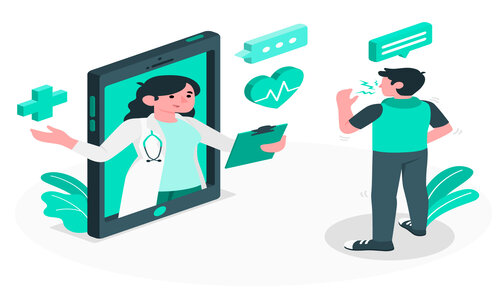


Telemedicine apps are transforming healthcare by enabling virtual consultations and remote patient monitoring.
Introduction
Telemedicine apps are transforming healthcare by enabling virtual consultations and remote patient monitoring. However, their effectiveness hinges on seamless data sharing across systems. Fast Healthcare Interoperability Resources (FHIR) standards are revolutionizing telemedicine app development by ensuring interoperability with electronic health records (EHRs) and other healthcare systems. By facilitating secure and efficient data exchange, FHIR enhances care coordination, improves patient outcomes, and reduces costs. This article explores how FHIR interoperability drives telemedicine app development and its impact on modern healthcare.
The Need for Interoperability in Telemedicine
Telemedicine apps rely on access to comprehensive patient data—lab results, medication histories, and vital signs—to deliver effective care. Without interoperability, fragmented systems lead to incomplete records, delayed interventions, and errors. For instance, a telehealth provider treating a diabetic patient needs real-time glucose data from an EHR to adjust treatment plans. Studies show that poor data sharing contributes to 20% of medical errors in the U.S. FHIR interoperability addresses these challenges by standardizing data exchange, ensuring telemedicine apps integrate seamlessly with EHRs and other platforms.
How FHIR Enables Seamless Interoperability
FHIR, developed by HL7, is a modern standard for exchanging healthcare data. Its API-based approach and modular “resources” (e.g., Patient, Observation, Medication) make it ideal for telemedicine app development. Here’s how FHIR drives interoperability:
FHIR uses structured, machine-readable formats like JSON or XML, enabling telemedicine apps to retrieve and share data consistently across systems. For example, a telemedicine app can pull a patient’s allergy history from an EHR to inform a virtual consultation, reducing risks of adverse reactions.
Real-World Impact: A rural telehealth clinic uses a FHIR-enabled app to access a patient’s EHR, identifying a penicillin allergy and prescribing a safe alternative during a virtual visit.
FHIR APIs allow telemedicine apps to connect with major EHR systems like Epic or Cerner. This ensures providers have a complete patient history during virtual visits, improving decision-making. For chronic disease management, FHIR enables apps to sync real-time data, such as heart rate from wearables, with EHRs for continuous monitoring.
Real-World Impact: A heart failure patient’s telemedicine app shares wearable data with an EHR via FHIR, enabling a cardiologist to adjust medications promptly, reducing readmissions by 15%.
FHIR supports care coordination by enabling data sharing among providers, patients, and caregivers. Telemedicine apps using FHIR can aggregate data from multiple sources—EHRs, labs, and pharmacies—creating a unified view for care teams. This reduces duplicative tests and improves efficiency.
Real-World Impact: A care coordinator uses a FHIR-integrated telemedicine app to review a patient’s lab results and specialist notes, streamlining a treatment plan for hypertension.
FHIR’s modular design allows developers to build telemedicine apps that scale with evolving needs. Whether integrating AI diagnostics or wearables, FHIR supports flexible data exchange, ensuring apps remain future proof.
Conclusion
FHIR interoperability is a cornerstone of telemedicine app development, enabling seamless data sharing and improved care coordination. By standardizing data exchange, integrating with EHRs, and supporting scalability, FHIR empowers telemedicine apps to deliver efficient, patient-centered care. As healthcare evolves, adopting FHIR in app development is critical for bridging data silos and enhancing outcomes. Developers and providers must prioritize FHIR to unlock the full potential of telemedicine.
